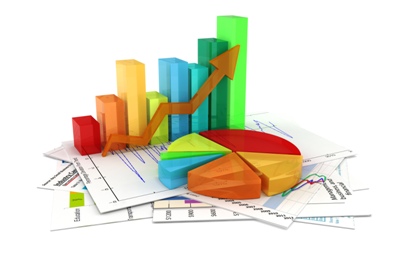 Data visualization – or graphing, to use a more plebeian synonym – is one of the hottest buzzwords in FP&A today… right up there with “big data” and “predictive analytics”. It can certainly be an immensely powerful tool for helping your audience grasp your most important points. And it’s getting more powerful – in addition to good old Excel’s already-lengthy list of graphing capabilities, there’s an increasing number of excellent data visualization software products.
Data visualization – or graphing, to use a more plebeian synonym – is one of the hottest buzzwords in FP&A today… right up there with “big data” and “predictive analytics”. It can certainly be an immensely powerful tool for helping your audience grasp your most important points. And it’s getting more powerful – in addition to good old Excel’s already-lengthy list of graphing capabilities, there’s an increasing number of excellent data visualization software products.
But data viz is also one of today’s most overused and overhyped information presentation techniques. In reviewing management reports – and even in reading reputable, widely-read publications – I often find myself appalled by visual presentations that look pretty at first glance, but turn out to be difficult and time-consuming to understand, don’t support the points that the written (or spoken) words are trying to make, and can even end up causing me to question the presenter’s candor.
Avoiding these unfortunate consequences requires careful thought and an honest, practical assessment of what you’re trying to say with your numbers. As you think about your presentation alternatives, I strongly suggest that you ask yourself these questions, in the following order:
- Which is the most effective way to impart your key information – a table or a graph? If you decide that a graph is the way to go, then – and only then – move to the next question…
- What is the best way to present the information graphically? Choose the appropriate “Chart Type” (to use the terminology in Excel), and then think about…
- What changes and additions to the graph will help your audience understand its central messages quickly and accurately? Will visual effects that “beautify” the graph help or hurt that objective? And lastly, ask yourself…
- Is there anything about your graph that might cause your audience to question your agenda or even your honesty?
Each of these questions is critical to clear, effective visual presentations; we’ll address each one in an upcoming blog. Each question is complex: regarding Question 1, for example, note that graphs, when compared to tables, generally…
- Require more space to present the same amount of data
- Can usually only address a single question
- Are a less precise way of presenting the information
- Require more time and effort to deliver a finished, high-quality presentation
- Offer immensely more presentation choices (e.g., chart types, axis scaling, colors, gridlines, etc.) – and this range of choices doesn’t always work to your advantage
- Don’t offer “safety in numbers” – an array of graphs that looks like a Boeing 747’s instrument panel can be just as mind-numbing and intimidating as a giant table packed with digits
When working with FP&A professionals, I often characterize graphs as “the cartoons of numbers.” Why? Because “cartoon” is a description that cuts both ways. Some cartoons – hard-hitting political cartoons, for example – create powerful visual impressions on a single image. Others, such as some of the more primitive animated children’s cartoons, are just silly and repetitive.
As an FP&A professional, you always want your reports and presentations to showcase of your critical thinking skills. So as you think about using data visualization to present your most important information and to make your most important points, ask yourself: What kind of a cartoon am I creating?
The article was first published in prevero Blog
Subscribe to
FP&A Trends Digest

We will regularly update you on the latest trends and developments in FP&A. Take the opportunity to have articles written by finance thought leaders delivered directly to your inbox; watch compelling webinars; connect with like-minded professionals; and become a part of our global community.

